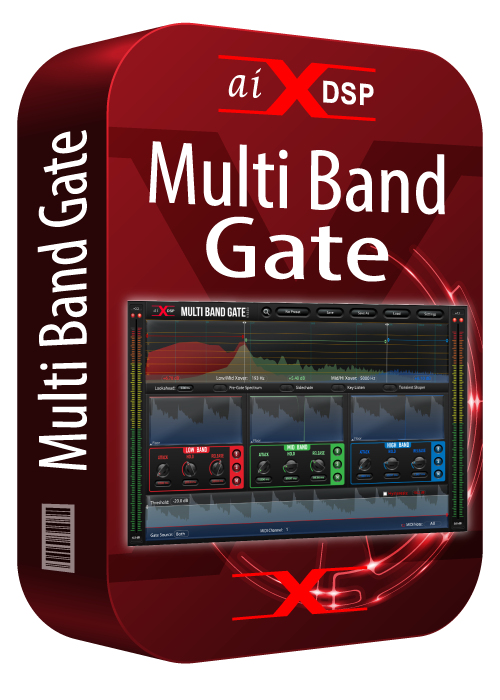Set the detector to the proper frequency range of the drum in question Set the crossover points to zero in on the parts of the frequency spectrum you want to behave in particular ways. Remember, there is a mute control per band, and since so often, mixing is about crating space, you may be lowering or muting entire bands to really clean up a mix. Set the hold and release controls long enough to let the tones you want thru and short enough in other frequency ranges to shut the unwanted bleed off before it makes trouble.
Why not just low pass(or high pass, or otherwise EQ) the offensive section out? Lets take the holy grail of all rejection problems, the tom tom, played by an inexperienced drummer, who also happens to have his cymbals only a few inches away from them, AND has to bash the cymbals before, during and after that tom fill. An impossible task right? Time to just give up and trigger it… Wait, even THAT won’t work as there is far too much hash in all that noise. You’ll have to MIDI it in by hand or drop trigger pulses. Good thing you are being paid by the hour right? Oh wait, by song? Starting to rethink your poor career choices now? But wait, there’s MBG:
1. Set the detector to the resonant peak of that tom.
2. Set the threshold to just open on the actual hits.
3. Solo the low band and use the hold and release times to give you the nice, long decay of boooooooooom as the tom rings out naturally.
4. Un-solo the low band and set the high band just long enough to give you the wet “splat” of the stick hit and then quickly shut it down before the cymbals start to ruin that tom sound.
5. Set the mid band to taste depending on how much space is in the mix and what exactly you want to do with it (again, in dense mixes, you might just mute this band!)
6. If you want even more control, use the separate outputs to, for instance, send the high band out to an exciter, the mid band out to a reverb and the low band out to a sub-harmonic synth!
A noise gate where audio is divided into 3 frequency bands controlled by one trigger source. Solves the age old problems of cymbal bleed ( unwanted sounds from adjacent drums) into drums for instance.
Problem: Since the first days of close microphone techniques, one sound source “bleeding” into another sound source’s microphone has been a massive problem. It gets even worse when drums are involved. So many pages of forums, FAQ’s and chats are devoted to the problem of hi hats bleeding into the snare mic and cymbal mics leaking into toms.
Previous solutions: Regular single band noise gate. You must compromise between the drum cutting off way too early, or horrible cymbal bleed. Another attempted solution comes in the form of filtering plugins, but these don’t seem to have enough control.
Our Solution: Split the drum signal into separate paths by frequency. Hold each of these frequencies as long as, and only as long as you want. No compromise. Have the low end of a tom roll on for seconds while the hi end allows all the attack, but cuts off before the cymbals begin making trouble. One of the absolute standout features is the ability to see all the opening and closing points on an ARA 2 editor window, allowing you to manually modify the timing and fix any missed gates or false triggers.







